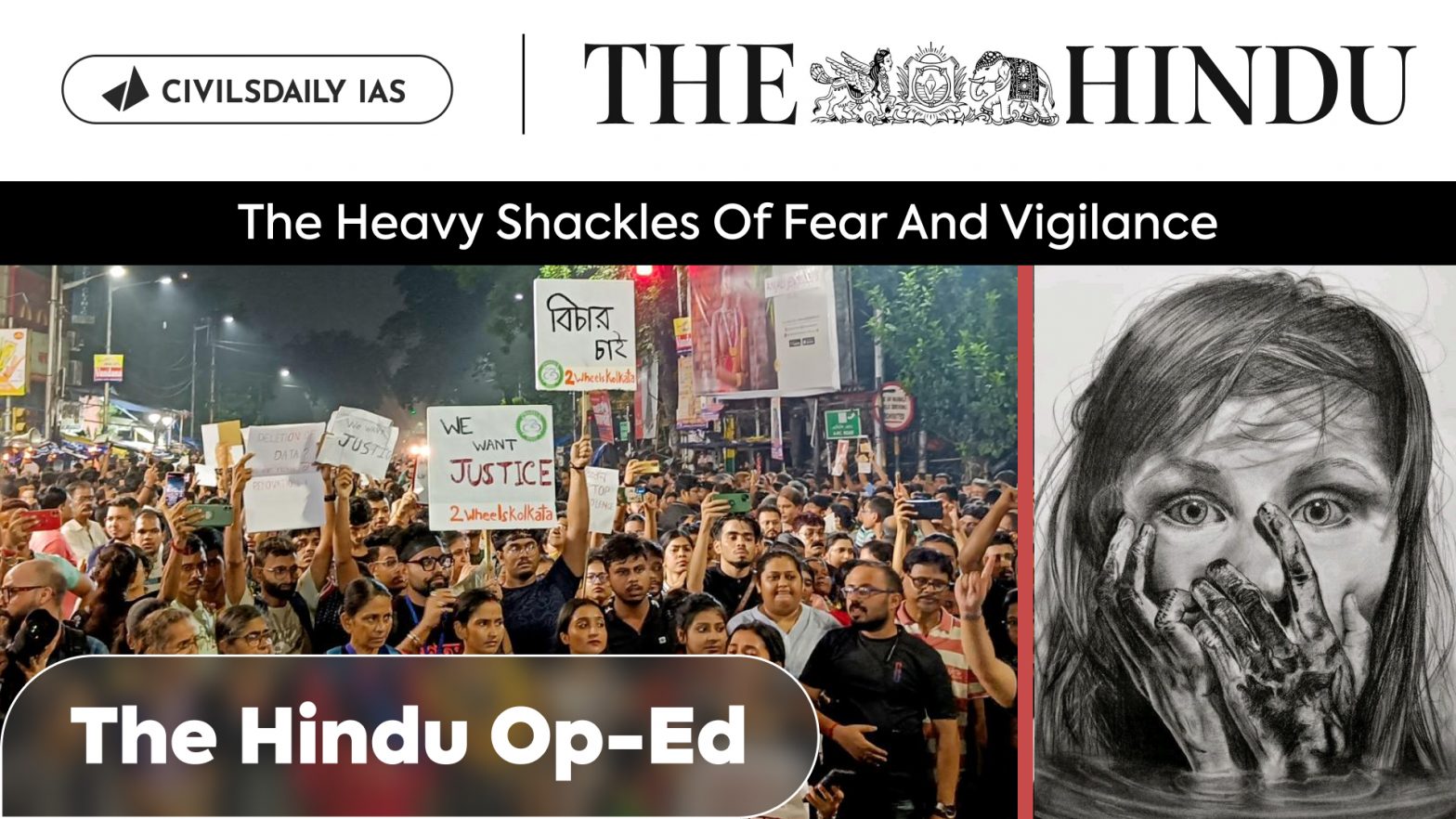| PYQ Relevance: Q Judicial Legislation is antithetical to the doctrine of separation of powers as envisaged in the Indian Constitution. In this context justify the filing of a large number of public interest petitions praying for issuing guidelines to executive authorities. (UPSC IAS/2020) Q What are the continued challenges for Women in India against time and space? (UPSC IAS/2019) Q ‘Women’s movement in India has not addressed the issues of women of lower social strata.’ Substantiate your view. (UPSC IAS/2018) Q Is the National Commission for Women able to strategize and tackle the problems that women face at both public and private spheres? Give reasons in support of your answer. (UPSC IAS/2017) |
Mentor comment: The brutal rape and murder of a woman doctor in Kolkata has reignited discussions about women’s safety in India. This incident highlights the pervasive violence women face, including sexual harassment and domestic abuse, while also emphasizing the often-overlooked psychological impacts of such violence. Despite the immediate physical consequences drawing public attention, the long-term psychological effects remain largely unaddressed and difficult to measure.
Let’s learn!
__
Why in the News?
The brutal rape and murder of a woman doctor in Kolkata has reignited discussions on the long-term psychological effects remain largely unaddressed and difficult to measure.
| What are the Psychological impacts of violence on women in India? • Mental Health Disorders: Women who experience violence are at a higher risk of depression, anxiety, PTSD (post-traumatic stress disorder), and suicidal tendencies. A significant percentage of women about 12% report severe psychological distress linked to domestic violence. • Substance Abuse: Many women resort to alcohol or drugs as coping mechanisms, often accompanied by feelings of shame and low self-esteem. • Health Disorders: Victims may develop eating disorders, sleep disturbances, and psychosomatic symptoms, manifesting psychological trauma as physical ailments. • Long-term Effects: Chronic stress, loss of trust, and ongoing fear significantly impair women’s quality of life and social engagement. |
An ingrained state of Alertness within women:
Women in India often live in a constant state of alertness due to inadequate societal and state protection. This heightened awareness becomes ingrained and is often perceived as normal, which results in the following aspects:
- Impacts on Freedom: The need to assess threats restricts women’s freedom to explore, take risks, and enjoy simple pleasures, affecting career choices and personal relationships.
- Intergenerational Effects: The burden of vigilance is passed from mothers to daughters, reinforcing the notion that women are solely responsible for their safety.
- Dissonance in Living: Women face a conflict between advocating for empowerment and adapting their behaviors for safety, creating a disparity between how they live and how they wish to live.
Impact on Society
- When women prioritize safety over exploration, they are denied the full spectrum of human experiences, depriving society of their potential contributions.
- Due to this, the emotional strain, psychological fatigue, and loss of joy and freedom that women carry are significant and often unrecognized.
- Acknowledging the burden of perpetual vigilance as a form of violence, it is essential for creating an equitable society where everyone can live, thrive, and contribute equally, free from safety concerns.
| Most Disadvantaged Section: Marginalized women face intensified discrimination and greater dangers due to intersecting factors of caste, class, and religion, often lacking institutional support and navigating environments rife with exploitation and abuse, unlike their more privileged counterparts. |
How can we redefine Safety to Prioritize Women’s Freedom and Empowerment?
- Shift the Burden of Safety: The responsibility of a safe environment should lie with society and the state.
- Invest in Gender-Sensitive Infrastructure: Developing safe and accessible public transportation systems is crucial for women’s mobility and economic empowerment. It includes well-lit streets, secure waiting areas, and the presence of female staff and security personnel.
- Improve Legal Frameworks and Implementation: Laws and policies must be aligned with international standards. This requires capacity building for law enforcement, the judiciary, and service providers, as well as legal literacy programs for women.
- Challenge Harmful Gender Norms: Addressing patriarchal attitudes and gender stereotypes, is crucial for creating a more equitable society. This involves engaging men and boys in gender equality initiatives, promoting positive masculinities, and challenging the normalization of violence against women.
- Increase Women’s Participation in Decision-Making: Need to increase women’s representation in leadership roles in government, civil society, and community-based organizations.
Conclusion: Women should not have to choose between their safety and their freedom. State and societal measures should not restrict women’s freedom any further under the guise of ensuring safety.
https://www.thehindu.com/opinion/lead/the-heavy-shackles-of-fear-and-vigilance/article68569659.ece


